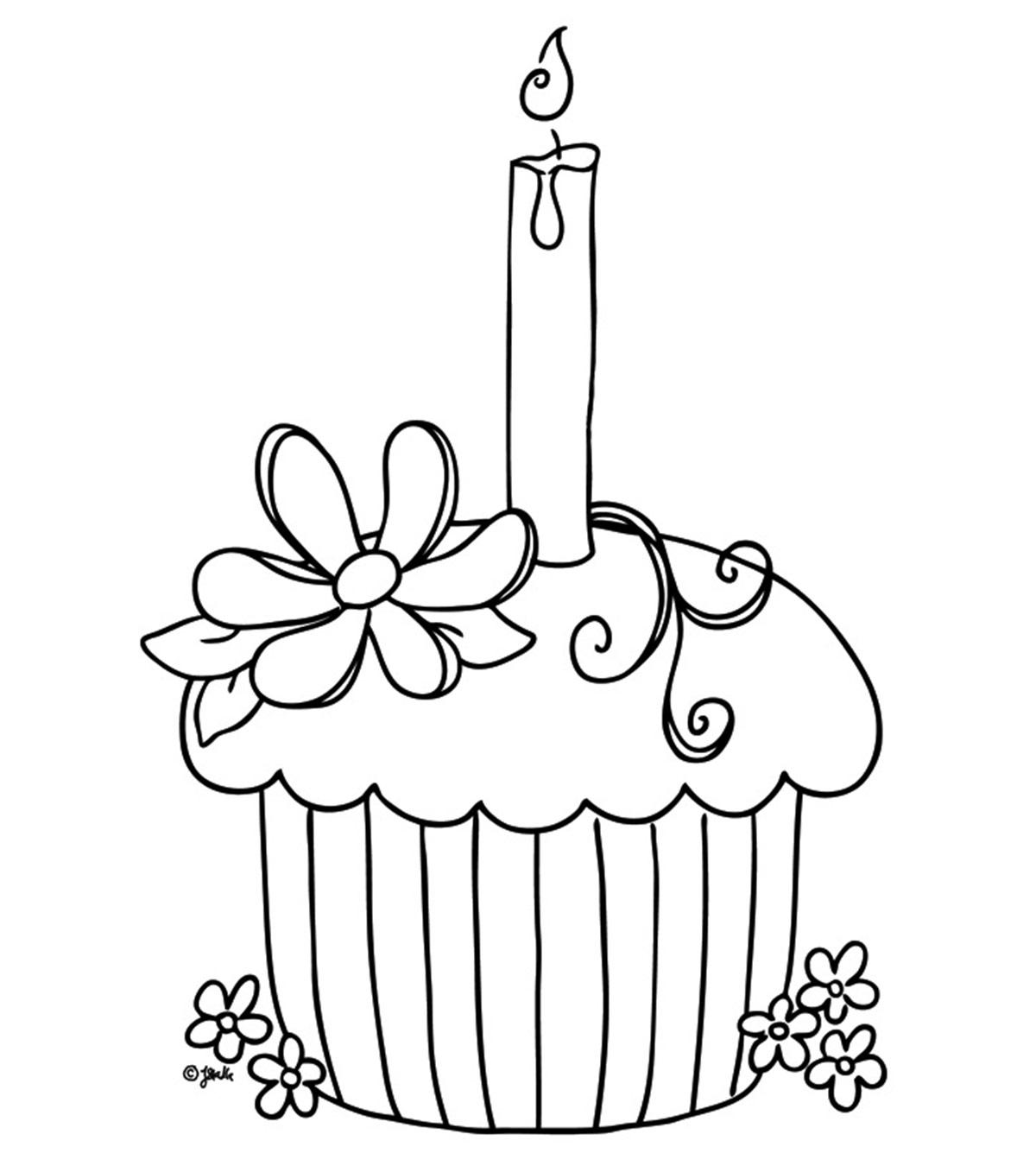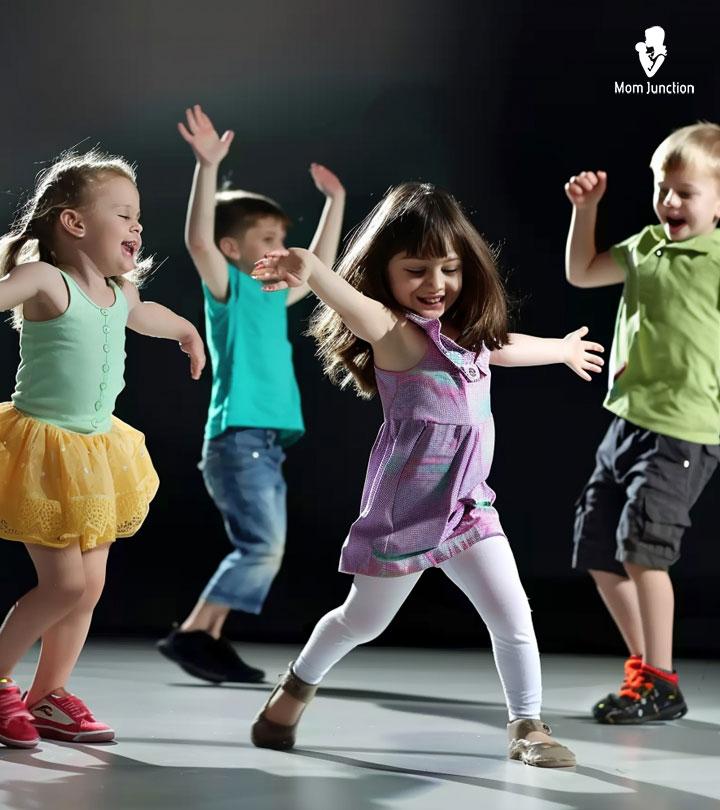
Image: Shutterstock
Hopscotch is an interesting ancient game played by Roman soldiers in ancient Britain during the early Roman Empire reign. Read on as we explain in detail how to play hopscotch.
Originally, squares were drawn over 100 feet wide, and soldiers ran through the course with their heavy armor. It helped in improving their footwork. Gradually, younger children recreated their version of the game by drawing smaller squares. The term hopscotch is derived by combining the two words “hop,” meaning to jump, and “scotch,” meaning to scratch, indicating the lines scratched out to form the squares (1).
 Trivia
TriviaHow Is Hopscotch Useful For Kids?
Hopscotch is a great way to incorporate a little exercise regime into your child’s life. But is it just a silly game for children?
No, hopscotch is more than just a hopping game. Read on to know why it is suitable for kids to play hopscotch (2).
Image: Shutterstock
- Hopscotch is a complex game of skills that can be learned and mastered through practice. The thinking involved in playing this game could stimulate the child’s cognitive development (2).
- Hopscotch is designed to help players master their gross motor skills by developing a keen sense of balance and footwork (3).
- The game also improves balance, body control, and strength in children as they lift themselves with every jump and hop to land in the right squares.
- Hopscotch trains a child’s proprioception and spatial awareness. Children become more aware of their actions and movements during the game.
- Throwing the markers into the designated square, hopping around, and retrieving the marker could help exercise a child’s hand-eye coordination. This would help them drastically in activities that require complex movements (4).
- Bilateral coordination is an activity that is necessary for everyday activities like eating and dressing. Hopscotch helps children coordinate both sides of their body (5).
- Children get more familiar with numbers, and their mathematical skills are triggered with the ascending and descending order of numbers written in the squares (6).
- Hopscotch can also be a group activity that develops children’s social skills and encourages them to cooperate and learn from each other(4).
In addition to the benefits mentioned above, hopscotch can also be modified into an educational game. Joyce, a mother, used hopscotch to help her son with speech problems practice ‘f’ sounds. She says, “I drew a hopscotch grid with sidewalk chalk and filled the squares with pictures of various words that began with that sound. I also spelled the word under the picture. Our grid that day included the words fox, fish, fork, four, five, flower, and frog.
“We used a shell from the lake to play. R (her son) would toss the shell onto the grid and hopped to retrieve it. He would say the word the shell landed on and finish the game. It was great because he was practicing making the sounds, he was surrounded by text, and he was using large muscle movements and balance in the great outdoors. And he loved it (i).”
 Did you know?
Did you know?What Do You Need To Play Hopscotch?
- A spacious area, such as a playground, backyard, terrace, or patio.
- Large sidewalk chalk to draw the hopscotch board.
- Markers – these could be small flat stones, pebbles, or a flat beanbag that the children can step on without hurting their feet.
Tips:
- Make sure that you choose a safe and traffic-free area for the kids to play.
- Make sure that the markers are small enough to fit within the hopscotch squares.
- Try to find objects that are not sharp and safe for the children to hold and throw.
- If you are playing with younger children, a beanbag is your best option, because stones tend to bounce or roll away when being thrown.
How To Draw The Hopscotch Squares?
Drawing hopscotch squares doesn’t need any artistic skills. Here are a few ways you can draw the chalk grid.
Image: Shutterstock
Younger children may need some time to get used to the eight-grid or ten-grid hopscotch. Let them start with smaller grids and let them master it before trying the bigger ones.
How To Play Hopscotch?
Hopscotch is a game for kids of all age groups. It can be played by a single player or by multiple players. The aim is to toss a marker into the hopscotch squares in sequence, hop through the squares, and collect the marker while hopping back.
Image: Shutterstock
Here are the hopscotch game rules and steps that children should know before they start playing the game.
- Once you have drawn the hopscotch squares, hand each child their marker.
- The first child to play throws the marker into the first square, ensuring it lands within the square, not touching the lines.
- The child now hops directly to the second square, skipping the first square they threw in the marker.
- They then continue to hop through the rest of the squares from 1 to 8, following the numbered sequence. Single squares should be hopped on, and double squares or side squares should be jumped into with one foot landing in each square.
- On reaching the last square, the player hops and turns around. They then continue to hop back through the hopscotch squares in the reverse order.
- The player pauses on reaching the square preceding the one where their marker is. This will be the second square if the child has thrown his/her marker in the first square.
- The child then bends over and picks up the marker in the first square, while still in the second, and hops out, again skipping the first square.
- With square one conquered, the child can now attempt to conquer square two by following the same steps, and the game goes on.
A player forfeits their turn under the following circumstances if they:
- Fail to hop throughout the game with the same foot.
- Step on the boundary lines of the hopscotch squares while moving from one square to the next.
- Throw the marker outside the square that they are playing for.
- Forget to skip the square that they have thrown the marker in.
- Forget to collect their marker on the way back.
 Quick tip
Quick tipHow To Spice It Up?
Hopscotch may be a traditional game, but it is never out of style. Here are some amazing hopscotch variations that you could try with your children once they’ve mastered the basic rules of the game.
1. Timed hopscotch
Get the kids excited by timing their game. You can set a time frame according to the kids’ age group, and anyone who does not complete the course within the time is out. You could also time each player’s course; the one who completes the course the fastest wins.
2. Kick it
How about kicking the marker into the numbered squares rather than throwing it?
In this variation, the child throws the marker at first and then kicks it out of the hopscotch grid on their way back. This is quite challenging because children have to remember when to throw and kick the marker to get it right.
3. Add more numbers
Are you worried about how many boxes in hopscotch should you go for? Why stop at a ten-grid hopscotch game when you can go up to 15 or more? More boxes mean extended fun, while the children are encouraged to put in the effort to throw the pebble into the farther squares.
4. Change shape and size
Pitch in some circles and triangles amidst the regular rectangular hopscotch grid. Get creative with the patterns and the sizes of the squares. Changing the shapes and sizes will test your children’s coordination, pacing, and landing skills.
Image: Shutterstock
5. Name categories
Here’s a fun twist to exercise those brain muscles and turn hopscotch into more of a memory game. Mark each square with a category. You could write pizza toppings, desserts, superheroes, animals, rhymes, etc.
When a player hops into a square, they call out things that pertain to the designated category. For example, if the category is pizza toppings, the player has to call out peppers, mushrooms, or olives. If the player repeats an item that was already said or cannot name any, they lose their turn.
6. Sign the squares
Each player throws their marker into a random square and hops through the squares as usual. On completing the course, they get to sign the square with their initials. The next player attempts to mark yet another square.
The game continues until all the squares are signed. The player with the most squares to their name wins.
7. Twist the squares
Image: Shutterstock
Draw squares that swirl out from the center. The spiral court is termed ‘Escargot,’ which means snail in French.
Each player hops to the center of the spiral following the correct hopping pathway. They pick up the stone while hopping out. If the player wins the square, they can initial it and put both their feet down in the marked square in the next round. The others, however, should hop over these marked squares.
8. A little twist
Add new little twists every time you play hopscotch with your kids. Tweak the traditional rules of hopscotch. For instance, you could hop on the square with the marker, while returning and then bend over to pick up the flat stone. You could also say that the players need to change their hopping foot while returning through the course.
You can also mark ‘safe squares’ in which children can hop on either foot or both without a penalty.
An exciting challenge is to have your children turn around and throw the stone backward without looking at the hopscotch squares or having them close their eyes while hopping.
Note: Make sure to be around if you are trying one of these alternatives.
9. Indoor hopscotch
Is the weather playing spoilsport and not letting your child play hopscotch? Why not surprise them with an indoor setup?
You could use duct tape to draw the squares along one of your passageways, so your children can hop through every time they pass by. Alternatively, you could also use some numbered mats or foam mats to make the hopscotch grid lines in your child’s bedroom.
10. Creative challenges
If your children have mastered all of the traditional hopscotch rules, get creative, and make up new ones. Mark some squares that the players have to spin around in or do a jumping jack in. You can add to the fun by adding a little dance at the top of the hopscotch before the child turns around to hop back.
You can make the game a mental math quiz by giving the children small math problems involving the basic operations before they throw in the pebble. They quickly solve the problem, and the result is the square that they play for.
11. Chalk obstacle course
All you need is a bit more sidewalk chalk and some extra space. Get innovative and create an obstacle course for your kids around the hopscotch grid. Drawdown patterns like zig zags, loops, lines to jump over, etc.
Image: Shutterstock
Another variant involves writing down little hints like ‘hop,’ ‘slide,’ or ‘stop,’ through the course. In addition to developing your child’s quick motor skills, this variation also encourages them to read.
 Quick tip
Quick tipFrequently Asked Questions
1. How does one win at hopscotch?
To win a game of hopscotch, you need to be the first player to complete one course for every numbered square on the ground.
2. What are the other names for Hopscotch?
Hopscotch is known by different names in different countries. It is known as Marelles, Templehupfen, Hinkelbaan, Ekaria-Dukaria, Pico, and Rayuela in France, Germany, Netherlands, India, Vietnam, and Argentina, respectively (1).
3. How does hopscotch teach kids problem-solving skills?
By posing challenges to kids, like avoiding stepping on lines or modifying their jumps, hopscotch as a sensory activity teaches them how to solve problems. They learn to find solutions, adapt their movements, and strategize their actions to overcome obstacles, fostering problem-solving abilities interactively and engagingly (7).
Teaching your children how to play hopscotch is a great way to ensure they engage in outdoor activities. Playing hopscotch helps your little ones develop their gross motor skills and improve their balance and body control. It also helps them develop a sense of spatial awareness and improve hand-eye coordination. In addition, since hopscotch requires minimal material, such as chalk and a marker, your child can easily set up the game for a fun time. Once your child masters the game, you can play variations of it by adding more numbers, changing the grid’s shape, or kicking the marker.
Infographic: Interesting Facts About Hopscotch
Play alone or with your best friend; hopscotch is a lot of fun! Did you know that this game dates back to the 17th century and was known as scotch-hop? Intrigued to learn more? Check out this infographic that takes you through its history and other fun facts. Illustration: Momjunction Design Team
Key Pointers
- Hopscotch boosts kids’ motor skills and cognitive development in a fun way.
- The game involves chalking out squares, shapes, numbers, and using stones.
- The objective is to hop through the squares without touching lines or losing balance.
- To play, single squares are hopped on, while double or side squares are jumped into with one foot in each square.
- Playing hopscotch improves balance, spatial awareness, math skills, group coordination, and complex stimulation.
Image: Dall·E/MomJunction Design Team
Join the fun by knowing how to play hopscotch with this fun and easy tutorial! Get ready to jump, hop, and have a blast!
Personal Experience: Source
MomJunction articles include first-hand experiences to provide you with better insights through real-life narratives. Here are the sources of personal accounts referenced in this article.
i. Letter sounds hopscotch.http://www.childhoodbeckons.com/2011/09/letter-sounds-hopscotch.html
References
- Hopscotch History and Variation Albany Edu.
https://www.albany.edu/~sw7656/#:~:text=The%20English%20term%20%22Hopscotch%22%20comesword%20meaning%20%22to%20cut%22. - Hopscotch with our early childhood team Manny Cantor Centre
https://mannycantor.org/hopscotch-with-our-early-childhood-team/ - 8 Gross motor skill activities for kids; Understood
https://www.understood.org/en/articles/8-gross-motor-skills-activities-for-kids - Who’s Up for Hopscotch? Benefits of this Time-Tested Game; Horizon Education Centres
https://www.horizoneducationcenters.org/blog/hopscotch-benefits - Stay active with gross motor activities; Child Development Centre
https://www.cdchk.org/parent-tips/stay-active-gross-motor-activities/ - Grow math skill while playing Hopscotch; Development and Research in Early Mathematics Education.
https://dreme.stanford.edu/news/grow-math-skills-while-playing-hopscotch/#:~:text=Hopscotch%20Supports%20Early%20Math%20Learning&text=Players%20land%20on%20one%20footand%20seeing%20and%20naming%20numerals. - What Is Sensory Play? The Benefits for Your Child and Sensory Play Ideas; Cleveland Clinic
https://health.clevelandclinic.org/benefits-of-sensory-play-ideas/
Read full bio of Alicia Spomer
Read full bio of Harshita Makvana
Read full bio of Kavita Kankani



























